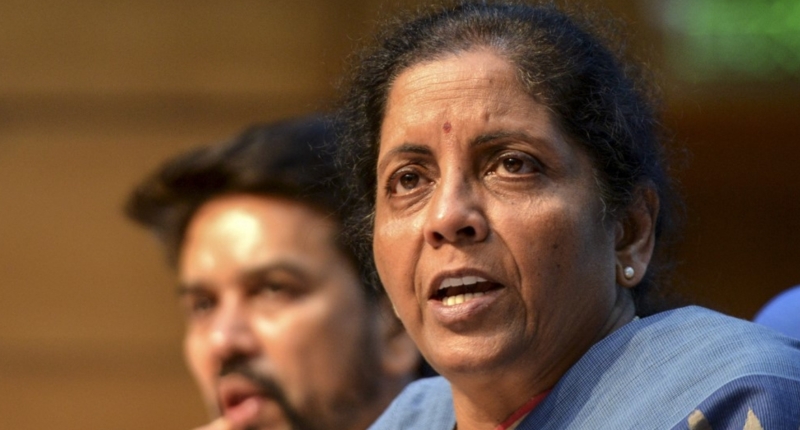India is capitalizing on the global “China plus one” business strategy by positioning itself as an alternative to China. As a result, India has emerged as a promising destination for businesses looking to diversify their operations away from China. Furthermore, advancements in technology are transforming domestic and international policies of nations, and India is well-positioned to provide digital skilling to its young human-capital base. The focus on human-capital advancement through fast-track skilling initiatives will be seminal in finding demand-supply equilibrium in the domestic labor markets, creating more livelihood opportunities, and making the Indian youth suitable for the global job markets. Additionally, India has emerged as one of the most vital voices for the Global South, advocating for the developing world’s concerns on the global stage. Finally, as Indonesia passes on the mantle of the G20 presidency to India, New Delhi will have to take charge of bringing the world back to order in the face of multidimensional global crises.
Economic Lessons for India from the Pandemic
India has become the most populous country in the world, overtaking China, with 1.417 billion people as estimated by World Population Review (WPR). This puts the international spotlight on New Delhi’s ability to utilize its abundant human resources to support a strong domestic economy while becoming a major player on the global stage.
Despite challenges such as a declining global political and financial environment, inflation concerns, and a dip in the foreign-exchange market, the World Bank has raised its growth forecast for India for fiscal year 2023-24 from 6.5% to 6.9%, citing India’s resilience to global shocks as the reason for the upgrade.
The 2023 federal budget aims to bring down the fiscal deficit to below 6% of GDP for the first time since fiscal year 2020. This target will enhance India’s macroeconomic stability through revenue mobilization and expenditure rationalization measures.
The pandemic has taught the world economy three important lessons. First, the dependence on China, given its inextricable interlinkages across global value chains (GVCs), must be reduced. The pandemic-induced supply-chain disruptions that originated in China have had severe consequences for smaller economies and prompted regional economies to become more attractive to investors, domestically self-sufficient, and resilient to macroeconomic shocks.
Second, India needs to prioritize the development of a robust healthcare infrastructure. The pandemic highlighted the inadequacy of India’s healthcare system in meeting the needs of its vast population.
Lastly, the ongoing Russia-Ukraine conflict has caused significant inflationary pressures in global energy and food markets. As a result, developing South Asian countries such as Pakistan and Sri Lanka are experiencing economic crises.
In conclusion, India’s ability to leverage its abundant human resources and enhance its macroeconomic stability while reducing dependence on China and improving its healthcare infrastructure will be critical in the coming years. The pandemic has highlighted these challenges and provided an impetus for India to take action.
India’s Strategy to Diversify its Global Operations Away from China
India has been implementing the global “China plus one” (C+1) business strategy to diversify its operations away from China by entering different parts of the global value chains (GVCs). This approach positions India as an alternative to China and has allowed the country to emerge as a promising destination for businesses looking to diversify their operations.
India received its highest annual foreign direct investment (FDI) in FY 2021-22, amounting to US$83.57 billion. To compete with China, India has implemented policies to attract more investments and increase its growth. The federal budget for 2023 has prioritized infrastructure development by increasing capital expenditure by 33% to 10 trillion rupees, equivalent to 3.3% of GDP.
India is countering Beijing’s political and economic dominance in the Indo-Pacific region and beyond by actively working on glocalized models through bilateral and multilateral platforms. India’s decision not to join the world’s largest trading bloc, the Regional Comprehensive Economic Partnership (RCEP), in 2020 sent strong signals of New Delhi’s dissociation from Beijing in the domain of trade partnerships.
Governments can create a more interconnected and resilient global economic system by leveraging their strengths and resources through economic partnerships. India’s strategy to diversify its global operations away from China has been successful, and the country is now seen as an alternative to China in the GVCs.
Technology and Skilling Initiatives to Reduce Economic Inequalities in India
The Covid-19 pandemic has accelerated the adoption and use of technology in various sectors, playing an increasingly significant role in enabling remote work and digital connectivity. India is well-positioned to provide digital skilling to its young human-capital base, with about 52% of its population under 30 and high internet penetration of 43%. The focus on human-capital advancement through fast-track skilling initiatives will be seminal in bridging the gap between the rich and the poor, creating more livelihood opportunities, and making the Indian youth suitable for the global job markets.
The 2023 budget has introduced Pradhan Mantri Kaushal Vikas Yojana (PMKVY) 4.0, which aims to skill Indian youth in new-age Industry 4.0 domains, including robotics, AI, 3D printing, and mechatronics, among others. This program is expected to address the current job crisis in India, where the unemployment rate reached a 16-month high of 8.3% in December 2022. Additionally, the program is expected to increase youth income, leading to higher levels of consumption, savings, and investments in line with India’s goal of becoming a $5 trillion or $10 trillion economy.
As technology progresses, India has a significant role in reducing economic inequalities by bridging the gap between the rich and the poor. The neoclassical and endogenous growth theories point to variations in technology levels as the cause of poverty in developing countries. India’s focus on skilling initiatives will help in finding demand-supply equilibrium in the domestic labor markets, creating more livelihood opportunities and making the Indian youth suitable for the global job markets.
India missed out on contemporary forms of the first Industrial Revolution during the colonial era in previous centuries. The high percentage of the Indian population under 30 and the high internet penetration presents an opportunity for India to leverage the Fourth Industrial Revolution (4IR) advancements in AI, data processing and transfer, data security, and DNA editing to bridge the technology gap.
In conclusion, India’s focus on skilling initiatives and the adoption of technology will play a significant role in reducing economic inequalities, creating more livelihood opportunities, and making the Indian youth suitable for the global job markets. The PMKVY 4.0 program is expected to address the current job crisis in India, increase youth income, and lead to higher levels of consumption, savings, and investments in line with India’s economic goals.
As India takes over the G20 presidency from Indonesia, it will face the challenge of leading the group consisting of about 90% of global GDP. The pandemic has led to fears of a looming global recession and economic crises in the South Asian region, with the fuel and food markets facing disruptions from the Ukraine-Russia conflict. India will have to take charge of bringing the world back to order in the face of these multidimensional global crises. India has emerged as one of the most vital voices for the Global South, advocating for the developing world’s concerns on the global stage.
Don’t miss interesting posts on Famousbio









